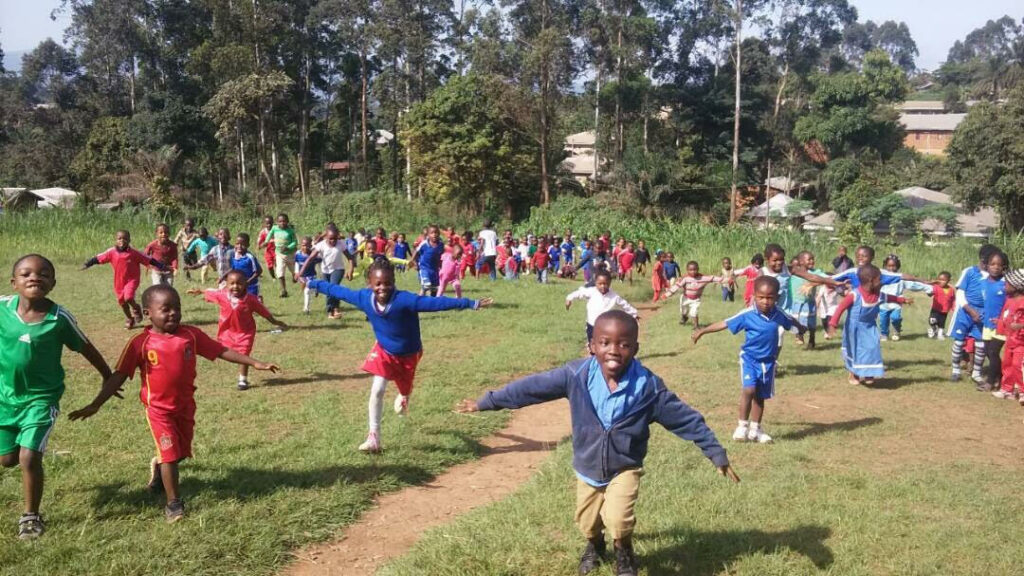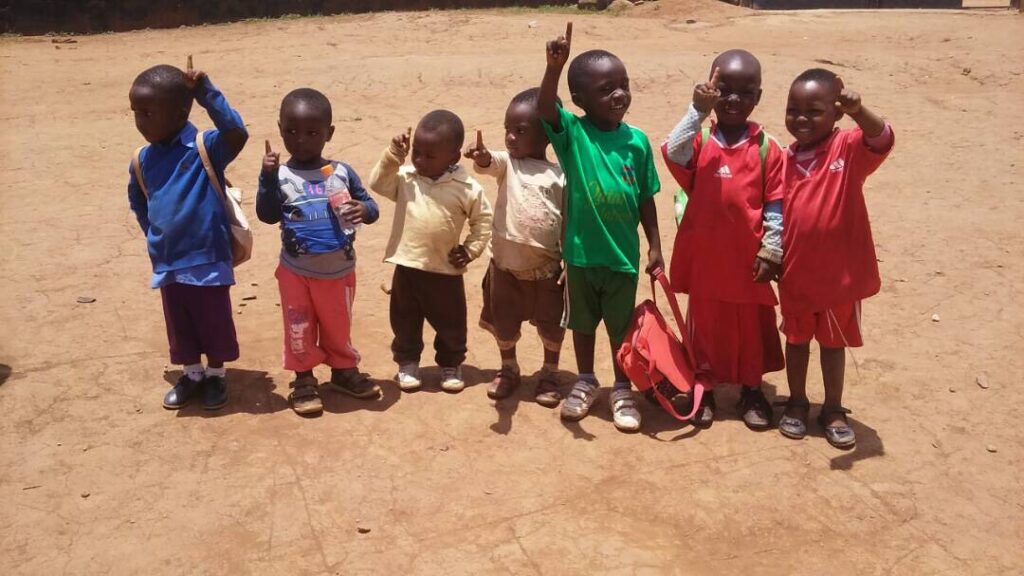There are currently an estimated 150 million children worldwide who have been orphaned by a variety of tragic circumstances.
To put that number in perspective, 150 million is more than the entire population of Russia. Of these orphans, an estimated 5.4 million live in traditional orphanages. The solution seems straightforward — to help children in orphanages, we should increase funding to orphanages. Yet, the majority of children in orphanages are not actually without parents or are orphaned children who do not need to be in institutional care. Many have parents or biological relatives but end up in orphanages due to lack of access to education or poverty- they are called Economic Orphans. In Cambodia, for example, 80 percent of children living in orphanages have living parents. As a result, some children are unnecessarily suffering in overcrowded or under-resourced orphanages. This is not to say orphanages have no value. They can provide essential care and resources to their residents. But in consideration of long-term outcomes, reliance on these institutions is less beneficial than focused efforts on the roots of the problem. The main reason why parents send their children to orphanages in the first place is to give them an education, and therefore a chance at a better life. Helping families send their children to school is an essential part of providing meaningful aid. Ultimately, the best way to solve this orphanage problem is to keep children from entering them in the first place.
“Every child and young person should live in a supportive, protective and caring environment that promotes his/her full potential.”
UN Guidelines for the Alternative Care of Children.
Despite UN guidelines seeking to ensure that children are not placed in out-of-home care unnecessarily, children continue to be sent to orphanages for a variety of reasons. Many families that are struggling with poverty may think their children are better off in orphanages. Sometimes, orphanage staff may actively solicit impoverished parents to hand over their children to institutional care. In cases where communities lack adequate social services, social workers might quickly refer children into orphanages. Furthermore, because orphanages are often funded on a per capita basis, they must host a minimum number of children to continue operating. This financial model incentivizes staff to keep children in the orphanage, rather than send them to a family home- even when the family is within the same village. Tourism (in many places) has also fueled the orphanage boom, as well-intentioned volunteers unwittingly contribute to the commodification of orphans. “Voluntourism” describes this trend in which volunteers travel to less-developed nations to help children living in institutions. Unfortunately this can sometimes lead to exploitation, when staff intentionally keep children living under poor conditions to pull in more ‘donations’ from visitors.

Even when an institutional care facility adequately meets physical needs (food, clothes, etc.), children suffer in other ways. The Society for Research in Child Development found that children in institutional care experienced delays in physical, hormonal, cognitive, and emotional development. Another study led by the Department of Psychiatry at Zagazig University noted that while the orphanages they studied could meet the material needs of the children, the children were “almost totally separated from the outside world and could not access normal families and society relations.” To thrive in adulthood, children need to experience and develop healthy familial and social relations — which cannot be done in the relative isolation of an orphanage. Voluntourism can also result in some children developing attachment disorders because they create bonds and relationships with volunteers who leave after a few weeks. No matter how well-meaning they are, voluntourists cannot truly help children in orphanages because their aid does not address underlying issues. As extensive research has found, the institutionalization of children in orphanages is ultimately detrimental.
ONETrack International is working to make certain that orphanages are reserved for the cases that need to be there. In Romania, the number of children in orphanages has dropped from 100,000 to 7,000 since 1989, and the country plans to shut down all old-style facilities by 2023. In the Eastern European region, ONETrack International has started working in Kosovo to implement our Transition to Home approach in the Balkan state. Kosovo does not have public shelters, so the Ministry of Labor and Social Welfare has relied on shelters to provide community-based services for vulnerable children. We are helping to rehabilitate and reintegrate children in the region so that they can be placed in the homes of family members or other caretakers.
Rwanda has also made strides towards eliminating orphanages by employing social workers to help children transition out of orphanages. These efforts have not been without challenges, however, as some families cannot feed the children and some children have ended up living on the streets. Despite these challenges, the work being done to close orphanages is a step in the right direction. To prevent these types of issues from happening to children under ONETrack’s care, we financially support families who have taken a child or multiple children into their households and provide them with essentials such as rice, cooking oil, shoes, school supplies, and anything else that is needed to assure that the children can be raised in a safe environment. We only support local organizations that ensure their children are healthy and educated. To successfully phase out the outdated orphanage system, governments and aid groups must coordinate their goals and start by solving problems caused by poverty.

To put it simply, orphanages should be treated as a last resort. For years, ONETrack International has implemented and supported programs that prioritize the well-being of children through alternative care methods. For example, in Cameroon, we have implemented the Transition to Home Alternative. This alternative approach to orphan care upholds the standards of international laws by protecting an orphaned child’s rights to be raised by biological relatives or other suitable providers. Our Transition to Home program reunites orphaned children with biological relatives who share the same cultural ties. If this is not possible, steps are taken to find a home for them in their community of birth. This is vital to keep communities together and allow children to remain connected to their heritage and cultural traditions. If both of these options are not possible, only then should a child be put into a collective institution. By reducing the number of children in orphanages, we can both reunite families and reduce the resource strain of orphanages to create a better life for those still in their care.
Sources
May, Kate Torgovnick. “Are orphanages a necessary evil, or is there a better way?” TEDBlog, 8 Nov. 2012, https://blog.ted.com/are-orphanages-a-necessary-evil-or-is-there-a-better-way/
Winkler, Tara. “Why we need to end the era of orphanages.” May 2016, TEDxSydney Lecture. https://www.youtube.com/watch?v=nz0cAjXVepg
“Why Do Children End Up In Orphanages?” Hope and Homes for Children, Mar. 2019, https://www.hopeandhomes.org/blog-article/why-do-children-end-up-in-orphanages/
“United Nations Guidelines for the Alternative Care of Children.” Resource Centre, 24 Sept. 2018, https://resourcecentre.savethechildren.net/library/united-nations-guidelines-alternative-care-children
Wong, Gillian, and Alison Mutler. “Global Effort to Get Kids out of Orphanages Gains Momentum.” AP NEWS, Associated Press, 19 Dec. 2017, https://apnews.com/40c2d8e2a6e64b2f8cc0718db0e9cf69/Global-effort-to-get-kids-out-of-orphanages-gains-momentum.
van IJzendoorn, Marinus H, et al. “Children in Institutional Care: Delayed Development and Resilience.” Monographs of the Society for Research in Child Development, U.S. National Library of Medicine, Dec. 2011, https://www.ncbi.nlm.nih.gov/pmc/articles/PMC4130248/
Fawzy, Nagy, and Amira Fouad. “Psychosocial and developmental status of orphanage children: Epidemiological study.” Current Psychiatry 17.2 (2010): 41-48. http://psychiatry-research-eg.com/texts/current-psychiatry-v17n2-10/7en.pdf


